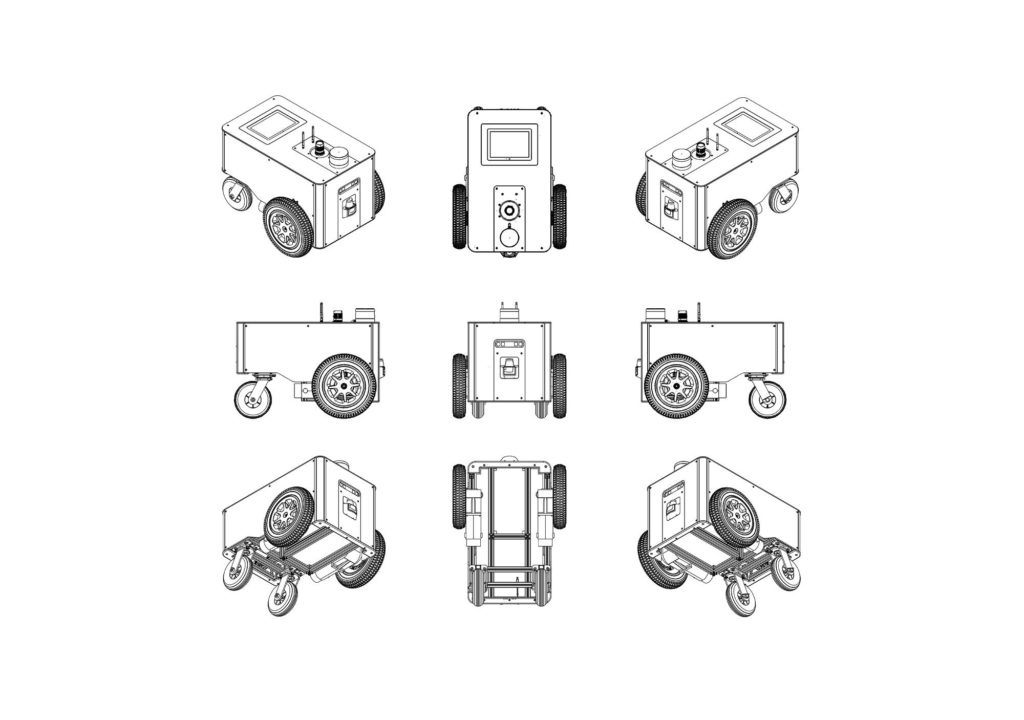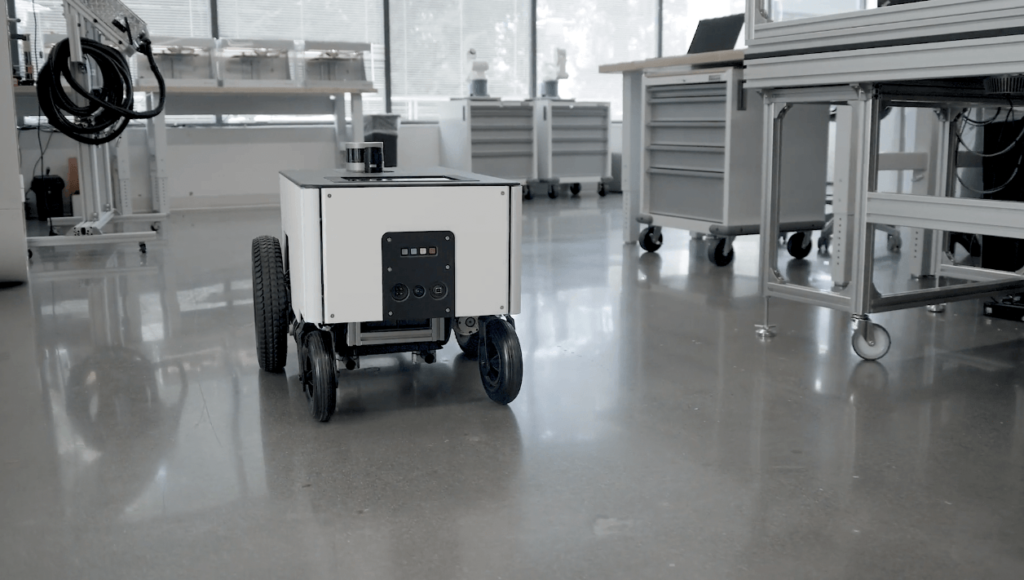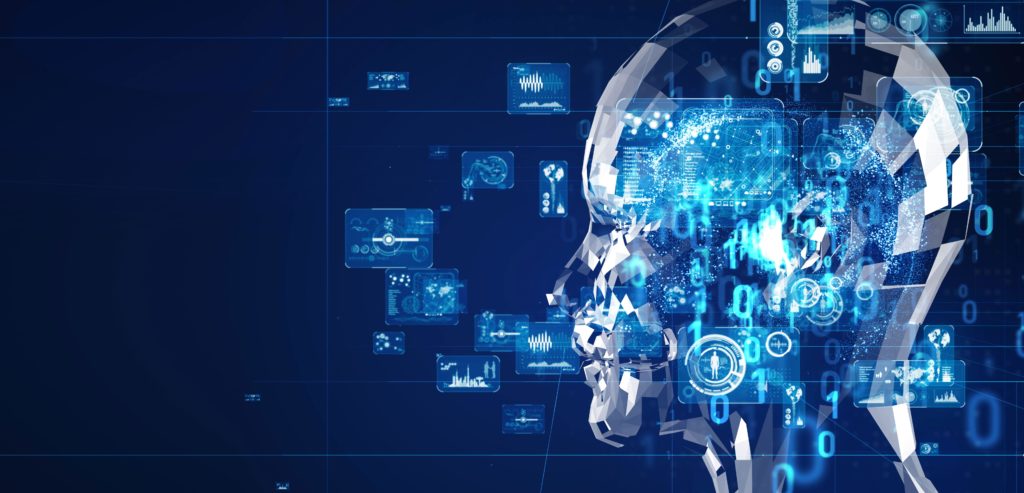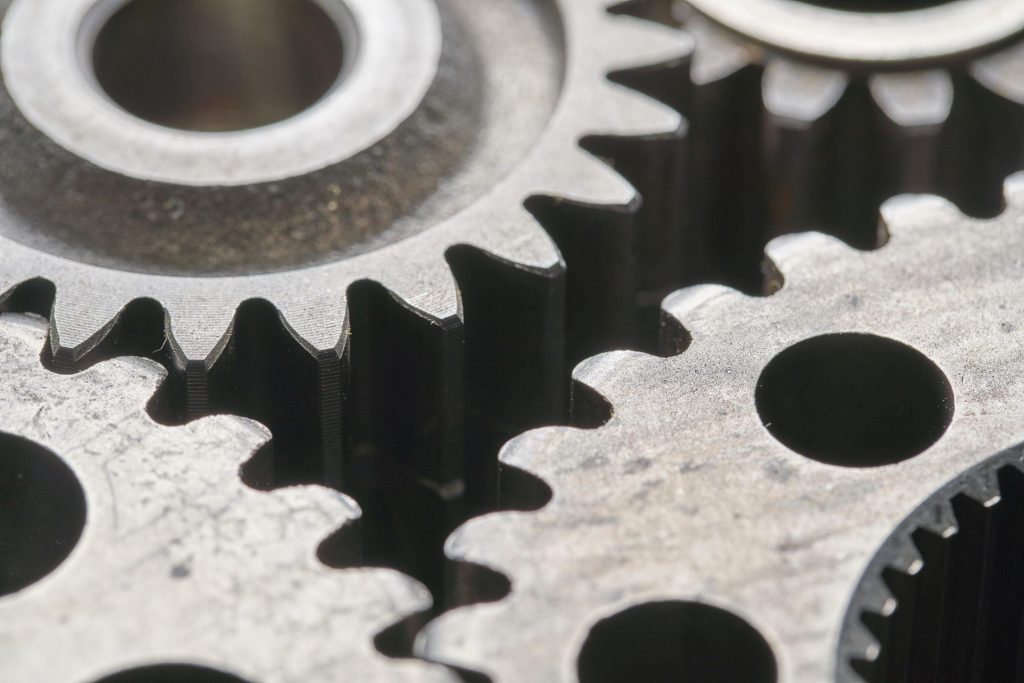Article
Robots in Agriculture: Transforming the Future of Farming
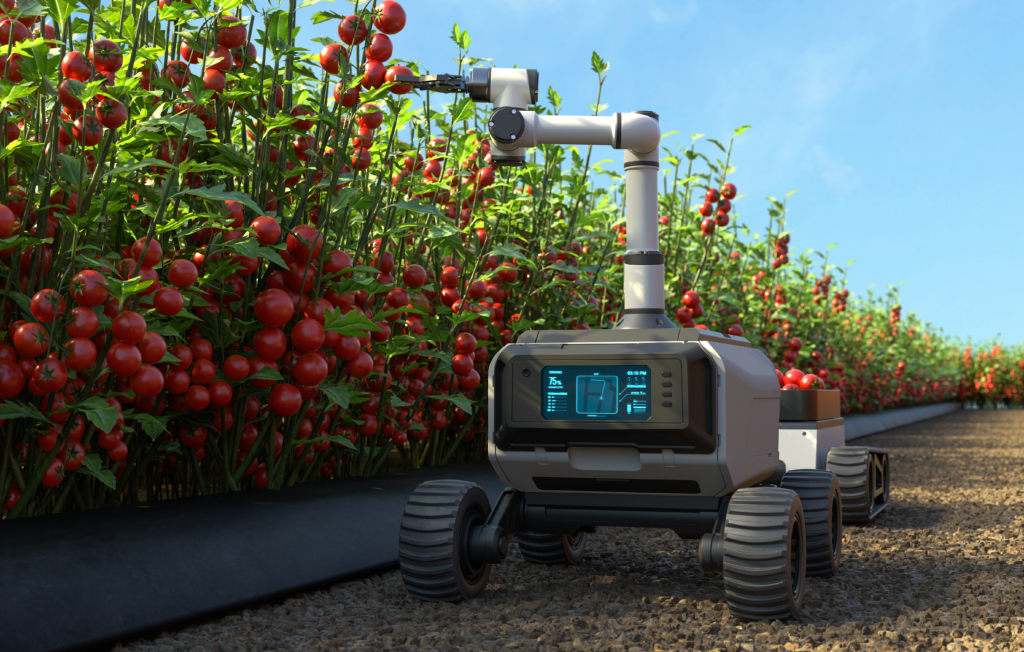
Challenges in agriculture have given way to a robot revolution that is well underway, where the use of robots in agriculture is becoming more common, proving its effectiveness, and leading to a constant stream of new insights as to how automation can benefit the agricultural industry.
In this article, we’ll cover:
- The challenges facing the agriculture industry
- The evolution of agricultural robots
- Keep applications of robots in agriculture
- Critical technology that enables agricultural evolution
- Barriers to adoption, strategies to overcome them, and the benefit of doing so
Critical agricultural challenges to solve
The agriculture industry faces a variety of challenges, including:
- Workforce challenges — long working hours and prolonged elemental exposure: Field workers are exposed to grueling conditions (heat stress, musculoskeletal disorders, skin conditions, injuries from machinery, pesticide poisoning, hearing loss, respiratory issues, and work-related stress and mental health concerns). An aging workforce, declining immigration, and declining interest in farming also play a role.
- Economic challenges — decreases in consumer spending: Consumer spending is critical for agriculture and with patterns of diminished savings and increased debt.
- Environmental challenges — the adverse effects of extreme weather: Increased heat, sun-damaged crops, and water shortages all create significant challenges for farmers. Their ability to provide the food needed to address global hunger is impacted.
But despite these challenges, the essential role of farming in civilizational health is unchanged. The American Farm Bureau estimates that 2.4 million farm jobs need to be filled annually. Where will that labor come from? How can farms keep up, while also evolving and adapting as new challenges arise and historical challenges persist?
The agricultural robotics market is expected to grow significantly in the next eight years: from USD 16.62 billion in 2024 to USD 103.50 billion by 2032, with a CAGR of 25.7% during the growth period. Robots can be employed to support agricultural infrastructure, augment the human workforce, and enable technological innovation to address the agricultural challenges mentioned above.
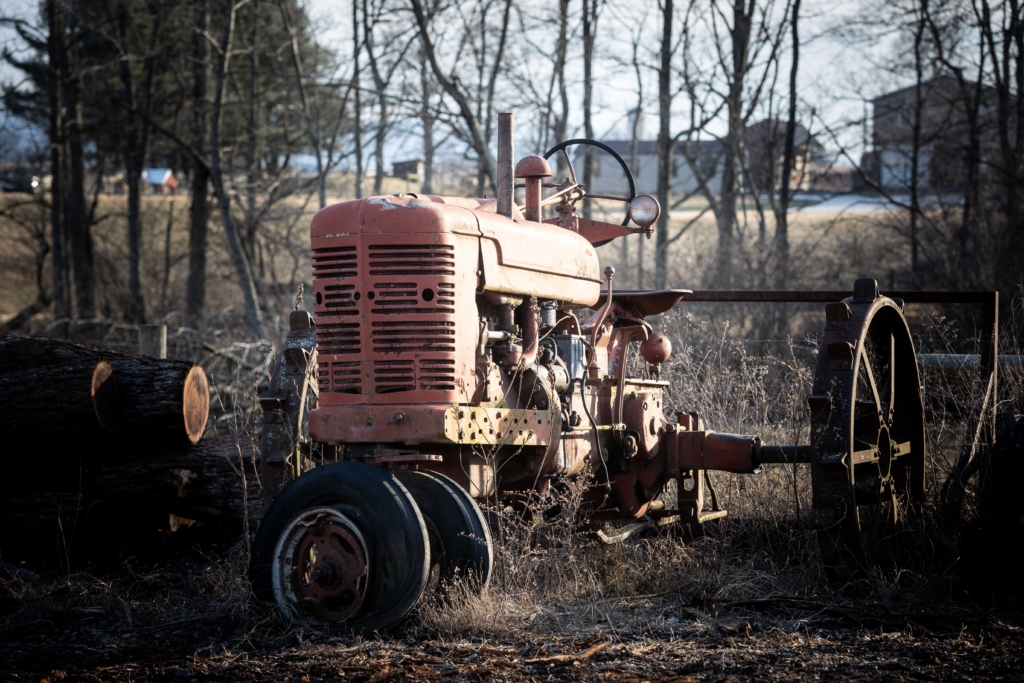
An evolution of robots in agriculture
A brief overview of agricultural advances before the introduction of robotics is helpful for context:
- First Agricultural Revolution: Occurred nearly 12,000 years ago and was the transition from hunting and gathering to agriculture and farming villages.
- Second Agricultural Revolution: Occurred between 1700 and 1850 and was characterized by significant advancements in farming techniques such as improved crop rotation systems, selective breeding of livestock, the development of chemical fertilizers, and the mechanization of agricultural production, leading to a major increase in food production.
- Third Agricultural Revolution: Occurred during the latter half of the twentieth century and corresponded with exponential population growth around the world. Hybridization, pesticides, and chemical fertilizers were key aspects.
Agricultural robots are part of the Fourth Agricultural Revolution, which will continue to build on the immense work of its predecessors. In addition to robotics, the Fourth Revolution includes biotechnology, sensors, and artificial intelligence (AI). The Fourth Agricultural Revolution, also known as “Agriculture 4.0,” was coined in 2018 and coincides with the Fourth Industrial Revolution (IoT).
Agricultural robots are bridging the gap left by labor shortages. Two distinct groups of agricultural robots have emerged, which include:
- Flying drones for remote sensing and certain small crop management duties
- Ground rovers for all-around local monitoring and multi-task specialization
The agricultural robots industry is taking full advantage of the advances in AI, ML, machine vision, battery technology, sensors, and data fusion techniques. These advances are rapidly improving the ROI of agricultural robot projects.
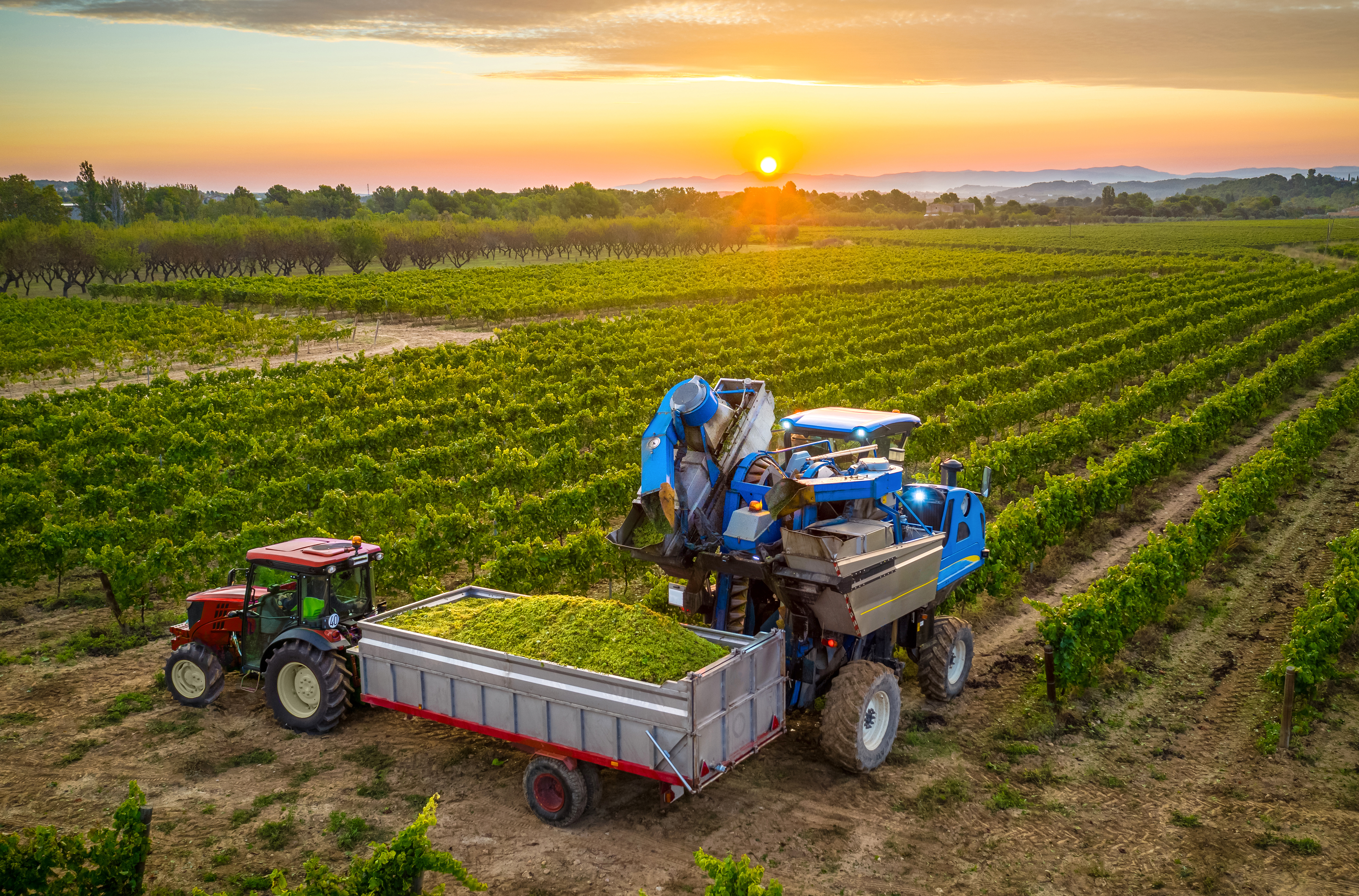
Key applications of robots in agriculture
Planting and Seeding
Robots in agriculture for planting and seeding typically use a combination of machine vision, lidar, and GPS to navigate. Solar power is utilized in some cases. Some systems, such as the Farmdroid FD20, keep track of the precise location of each seed and dispense the seeds precisely in a specific pattern. Since the position of each seed is known, weeding can take place before the seed sprouts are visible. Many of the robots that are used for planting and seeding can perform other tasks as well, such as mechanical weeding and tilling. The Fendt Xaver is used for swarm robotic planting of fields. The smaller robots can precisely plant seeds while avoiding compaction and using less power. Other planting and seeding robots include Agxeed, Naïo Orio, and Agrointelli Robotti.
Crop Monitoring
Drones fly a specified path over the fields with multispectral cameras (5 types of pictures at the same time). Drones fly autonomously, snapping thousands of photos. The pictures from the drone are taken and stitched together to provide a map of health. Healthy crops absorb visible light and reflect near-infrared light. These maps often provide early warnings because the imagery can pick up problems often before it is obvious by a typical visual inspection. The farmer can then use the maps to better inform where to apply fertilizer, pesticides, and distribute water. Drones are able to pick up higher resolution compared to satellite images. Companies currently manufacturing drones for agricultural mapping include DJI, Parrot Drones, and 3D Robotics. Software for processing drone images to create maps includes Pix4D and Drone Deploy.
Weeding and Pest Control
Agricultural weeding robots typically either use lasers or mechanical means to kill weeds. Autonomous robots for eliminating pests include a combination of suction collection of beetles and mites as well as spraying fungicides. Many options for weeding are wheeled platforms but drones have many advantages for spray applications. Players in this portion of the agricultural robot field include Carbon Robotics (whose AI-powered LaserWeeder uses computer vision, deep learning, agrobots, and lasers to eliminate weeds) and Aigen (which develops solar-powered autonomous robots that use AI to identify and remove weeds from crops without the need for herbicides), and TRIC Robotics (whose solution “harnesses the power of ultraviolet light for strawberry farmers, offering a highly effective, chemical-free alternative for pest control”). Other industry leaders include Digital Farmhand, Rippa Robot, Earth Rover, FarmWise Titan, DJI AGRAS T50, XAG R150, Tertill, Autonomous 5ML Orchard Tractor, and Pixelfarming Robotics.
Harvesting
Harvesting robots utilize computer vision with machine learning for careful picking of fruits. Mobile manipulators (robots with robotic arms) are a common solution. Contributors to agricultural robotics harvesting include: Autonomous Robotic Kiwifruit Harvesting and Pollination (CARES), Octinion Rubion, and Organifarms BERRY.
Soil Management
Agricultural robots focused on soil management include soil coring, soil sampling, soil analysis systems, tilling, and monitoring. TerraClear offers a solution with rock mapping and rock picking technologies that give farmers the freedom to cultivate more land with fewer obstacles. N2 Vision’s robot can tell farmers where nitrogen is needed and add nitrogen in those areas. Rogo’s Smart Core is an autonomous robot that collects soil samples and brings them to the edge of the field for shipment to a lab. Other products and providers include Autonomous Fendt, AutoAgri, Vitibot, and FarmBot.
Livestock Management
Swagbot is an AI-powered robot developed in Australia. The robot analyzes and maps the fields and determines the best location for cattle. Once the cattle are familiar with the robot they will follow the robot around and graze in the area where the robot resides. The Lely Astronaut A5 milking robot is based on the principle of “free cow traffic.” The principle allows cows to eat, rest, and enter the robot area to be milked on their own accord. Lely also has robotic and automated systems that work with the Astronaut to feed the cows.
The CalfRail Duo is a robot that feeds two calves at once which was previously a labor-intensive job. Several companies offer drones for livestock monitoring including ZenaDrone, and Lely Juno’s automated feed-pushing technology (pictured below) increases feed intake drastically, improving animal health and financial ROI.
Technologies the robots in agriculture movement into the future
Scaling robots in agriculture to meet the demands of the future will require a multidisciplinary approach, from the mechanical engineering involved in building robots themselves to the cloud architecture necessary to enable fleetwide communication. Other powerful robotics-related technologies like swerve drives and robot perception, incorporating development standards like MLOps, and mastering middleware like ROS 2 will all play a key role in bringing agricultural robots to their full potential.
Here’s a list of additional tools and technology we expect to play a foundational the proliferation of robots for farming and other agriculture-adjacent use cases.
AI & ML
AI (artificial intelligence) and ML (machine learning) continue to drive swarm robotics applications. Swarm robotics will be utilized more in agriculture for the following reasons:
- If something happens to one of the robots there are others to pick up the slack.
- Less reliance on one large machine during critical periods such as planting, harvesting, etc.
- Farmers are also able to gain entry into automation with less investment and then build on that investment.
- Easier to service smaller machines and change out tooling for different tasks
- Adoption of smaller machines for large farms will lower the barrier of entry for small farms.
Specific applications for swarm robotics include:
- Precision farming
- Crop monitoring and data collection
- Automated planting
- Weed control
- Pest management
- Harvesting
- Pollination
Harvesting and fruit picking pose many difficult robot applications. To automate the harvesting processes, more adoption of machine learning with better, faster hardware developed by companies like Nvidia will enable robots to move faster and more efficiently.
Continued improvement of monitoring and optimization including:
- Irrigation systems
- Crop and soil monitoring
- Livestock health
- Intelligent pesticide application
- Predictive analytics and yield mapping
- Sorting of harvested produce
- Surveillance
As artificial intelligence technologies, sensors, and software continue to improve all of these tasks will become more efficient and easier to adopt.
Sensors & IOT
Improved sensor offerings have continued to drive improvement in agriculture including:
- GPS navigation/GNSS RTK Positioning
- IMUs
- Lidar
- Cameras
- Smart Sensors
These sensors combined with artificial intelligence and machine learning will continue to increase the efficiency and productivity of agricultural robots in the following areas:
- Improved precision task execution
- Real-time environmental monitoring
- Enhanced navigation and autonomy
- Data collection and decision-making
- Cost-effective resource management
- Scalability and adaptability
- Safer operation
- Increased speed
- Enable sustainable farming
One example of the evolution of sensors and hardware is a comparison of John Deere’s Gen 1 and Gen 2 autonomous systems. The perception range increased from 16 to 24 m. The upgrade also allows the machines to drive 40% faster and pull implements 2 times wider. This was allowed by faster, more capable computing power and lower cost, more capable cameras.
GPS and Geospatial Technology
GPS navigation and geospatial technology are crucial components that enable precise navigation and data collection for robots in agriculture and are used for tasks including autonomous navigation, crop scouting, precision planting, and harvesting optimization. For cloud applications to be updated in real-time there needs to be a constant stream of data.
However, there is often a lack of 4G and 5G coverage in rural farming areas. With the addition of LEO satellites from companies like Starlink and Amazon Kuiper, farmers can utilize cloud applications effectively even where there is no cellular coverage. The move in this direction is highlighted by partnerships between John Deere and Starlink.
Energy Solutions
Agricultural robots are subject to harsh sunlight conditions so it only makes sense that all-electric agricultural robots are outfitted with solar panels like the Farmdroid FD20. The FD20 is completely solar-powered. In this area advances in solar technology will have major impacts.
Most recently Perovskite Solar Cells have become available which increase the efficiency of solar panels by 20%. Continued advances in solar technology will lead to improved performance of agricultural robots.
All-electric tractors by companies like John Deere are becoming more common. However, for electric tractors to overcome traditional internal combustion engine-driven hydraulics will require better batteries. Current battery technology such as Lithium Iron Phosphate (LFP) is limited by energy density and recharge time. Solid-state batteries have a solid electrolyte and are expected to double energy density, drastically reduce charge times, and perform for a long life (up to 20 years) with reduced fire risk.
The one drawback to solid-state batteries is how difficult they are to manufacture. Several companies claim they will begin small-scale production of solid-state batteries in 2028 including battery leader CATL. If and when solid-state batteries will make it to full-scale production remains to be seen.
Fuel cells have also been considered for agricultural robots in combination with solar cells. Fuel Cell Agricultural Mobile Robots (FCAMR) consist of solar-powered agricultural robots with fuel cells. The addition of fuel cells allows for a longer time between charges while reducing the emission of greenhouse gases. Unfortunately, there is a lack of hydrogen infrastructure to supply fuel cell-based systems.
Vertical Farming
Instead of bringing the robot to the field, vertical farming brings the field to the robot. Vertical farming is the practice of growing crops in stacked layers, often indoors, to increase crop yields (via yield optimization techniques and technologies) and conserve space. Vertical farming companies include Plenty Unlimited and Soil Organic. The goal of vertical farming is to use automation to minimize the human labor required to maintain farms. Because vertical farms are indoors in many cases they can avoid the use of pesticides but they usually require artificial lighting.
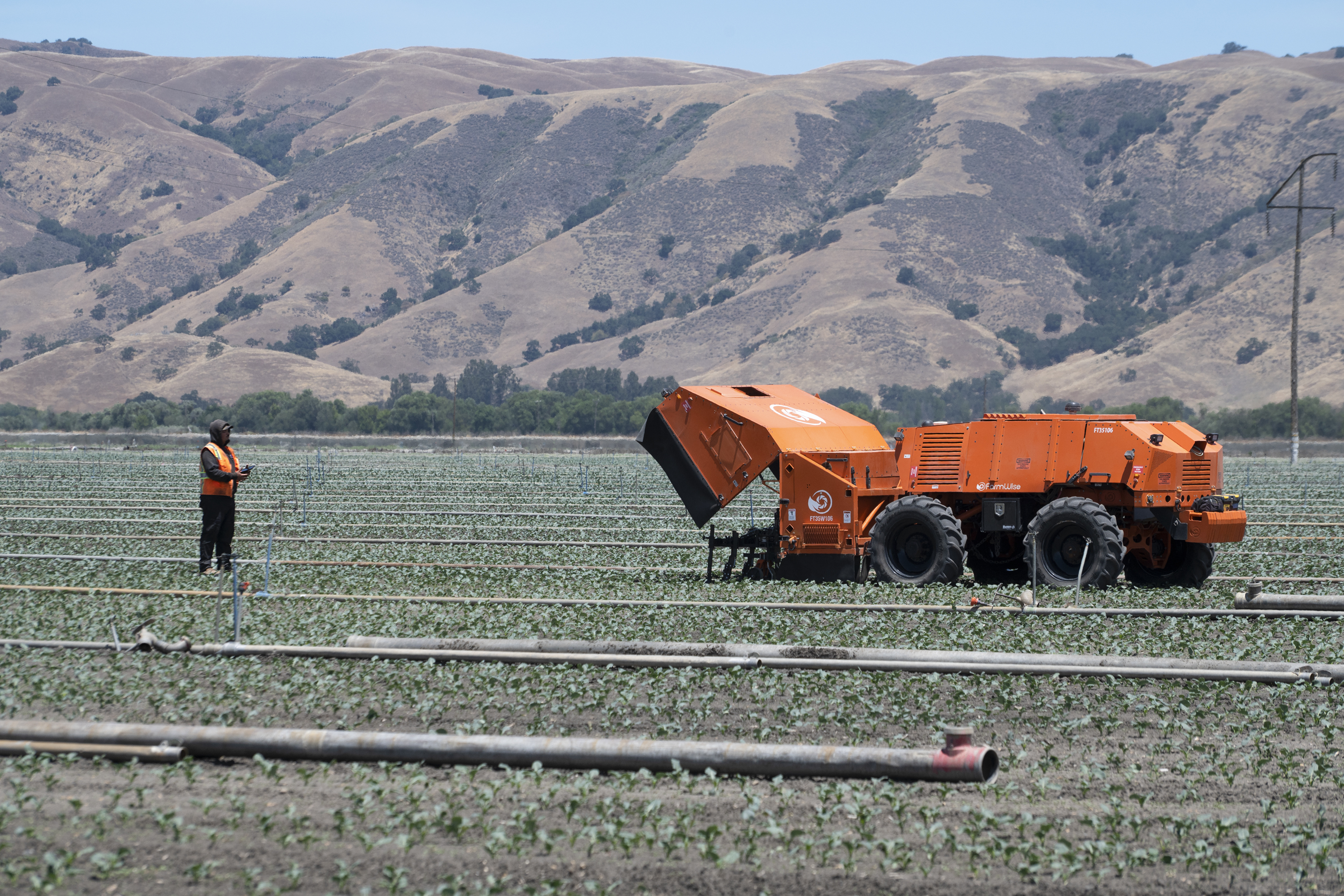
Challenges and barriers to the adoption of robots in agriculture
Many advances have not reached widespread adoption. For example, a 2023 USDA report states only 27% of farms use precision agriculture. Common barriers to entry include:
- High initial costs and ROI concerns: Robots are expensive and still require human intervention to set up the mission and maintain the robot. Robots that operate more autonomously and can handle more diverse tasks will provide greater ROI.
- Technical limitations: Farmers are still gaining the confidence necessary for the widespread use of robots in agriculture. In some cases, they find that robots have difficulties in the particular terrain that their farm is on. Mark Richards struggles with whether to use autonomous robots using a 4-row versus using a more conventional 8-row. He wonders whether it fits his 500-700 acre farm in Ontario. In addition, agricultural robotics are still developing to be better at tasks like harvesting which in many cases can be completed more quickly by manual pickers. Furthermore, many applications of robots in agriculture for specialty crops, for instance, are still in the research stage.
- Skill gaps and farmer training: Although the use of robots in agriculture reduces the labor requirement it increases the need for education and training. Troubleshooting autonomous systems adds a layer of complexities where training is required.
- Regulatory and safety concerns: There are many challenges to harmonizing agricultural robot standards. The International Forum of Agricultural Robotics or FIRA has been formed to handle these challenges by coordinating and harmonizing standards. In the meantime, standards such as ISO 18497 have been created for agricultural machinery although many sources feel that there is ample room for improvement especially when addressing safety.
As opposed to a complete overnight transformation of all farming activities and workflows—which is simply not possible—incremental innovation and investment in automation is critical. Whether analyzing the strategic impact of agricultural digital transformation, building a rapid prototype to solve a specific problem, or exploring off-the-shelf robotics integrations adopted by others in the industry, leaders in the agriculture industry can start small, prove concepts, and avoid the common roadblocks listed above.
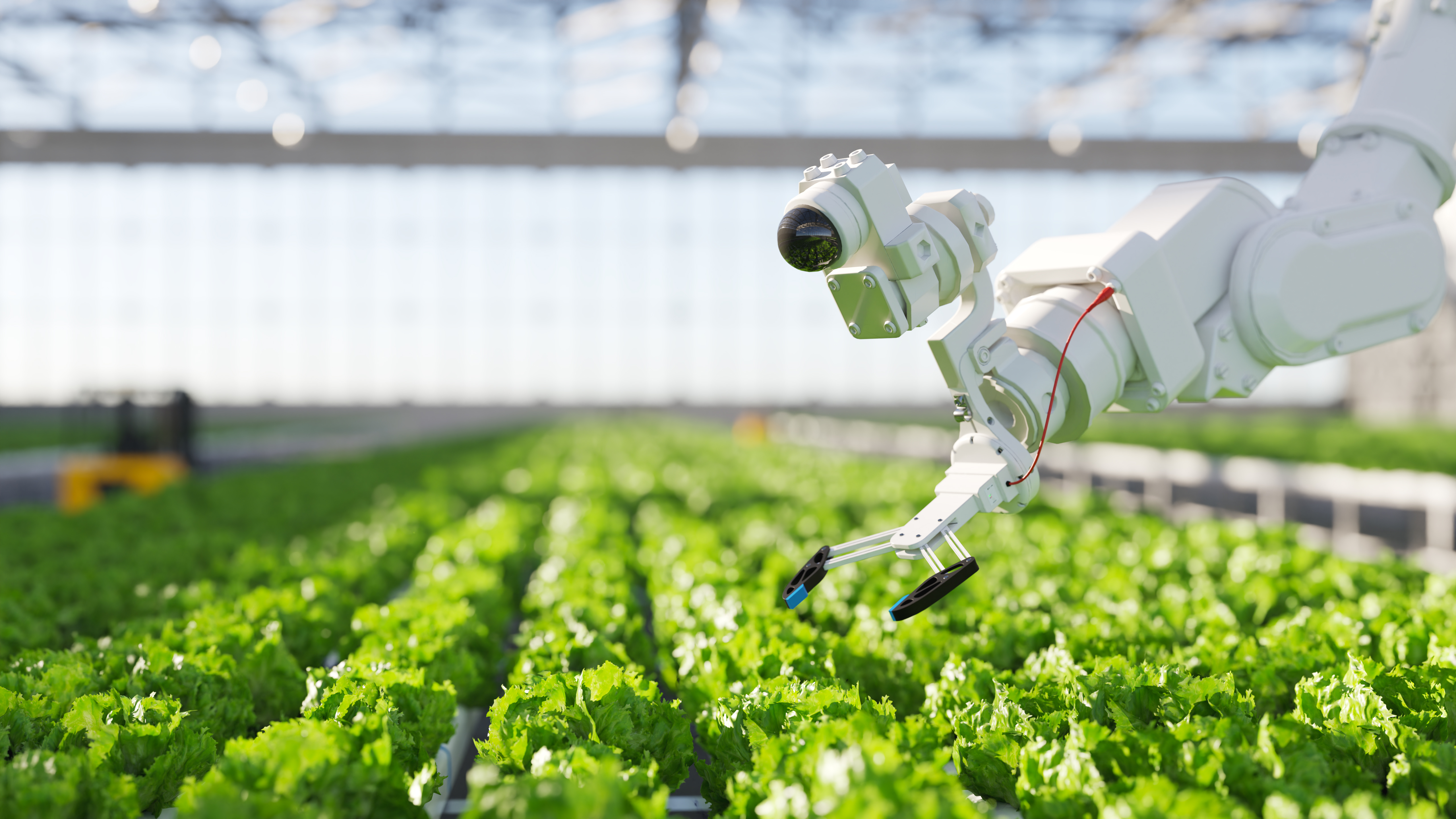
Key benefits of robots in agriculture
Increased productivity and efficiency
Although robots do break down they are constantly being improved so that they can continue to become more reliable. Robots in agriculture will continue to evolve to be more autonomous, more energy efficient, more reliable, move faster, and provide better safety. Robots work tirelessly and will continue to improve productivity.
Reduction in labor dependency
Agricultural robots have been focused on labor-intensive areas including aerial inspection and spraying drones, milking robots, automated harvesting systems, and driverless tractors and automated harvesting. After the Third (Green) Agricultural Revolution, it was estimated that 1 farmer feeds 155 people and it is estimated that by 2050 1 farmer will feed 265 people.
Improved crop yield and quality
As discussed previously in this article, robots in agriculture are working in many areas to not only complete the work but to improve overall yield and quality. These areas include:
- Precision planting
- Drone-based field monitoring and surveying
- Weed removal
- Fast and efficient harvesting
- Livestock management
Using robots in agriculture to enable sustainable farming practices and reduce resource usage
Drone monitoring of crop health enables water, fertilizer, and fungicides to be conserved and used only where needed. Some agricultural robots run entirely on solar power. As agricultural robots and supporting technology continue to evolve resources will be conserved through:
- Targeted input application: Drone and AGV spraying, watering, precision planting
- Weeding: Done efficiently and consistently to prevent weeds from taking resources that the crops can use
- Site-specific management: Farming often takes place in non-homogenous areas. Robots can evaluate the soil (coring), the amount of water, and the fungicides needed to tailor the resources to that specific location or area of the farm.
- Energy efficiency: All-electric vehicles, as they increase in efficiency with better batteries and solar cells will continue to reduce energy consumption.
Adopting robots in agriculture to accelerate productivity
The evolution of agricultural robots and supporting technologies will continue to be the key driver in improvements of agricultural productivity. Agricultural productivity needs to continue to improve to feed the world of tomorrow with less workforce available. For productivity to continue to increase, more R&D needs to be invested in the right areas to ensure that agricultural robotics will continue to progress and continued collaboration will need to occur between R&D entities and farmers to ensure the right applications are being developed.
There are hurdles but the future is bright.
If you’re interested in learning more about how Fresh collaborating with other industry leaders the push the robotics field forward, check out the Northwest Robotics Alliance (NWRA) website, which has more information about the alliance’s mission and objectives.
Fresh will also be hosting an upcoming event, featuring leading agriculture robotics companies leading agriculture robotics companies Aigen, Carbon Robotics, TerraClear, and TRIC Robotics. The in-person event is sold out; however, you can RSVP to stream the event here.
Finally, if you’re interested in learning more about the future of agriculture beyond just robotics, check out our recent podcast episode: The Future of Agriculture.
Additional reading about agricultural robots
- 16 Agricultural Robots and Farm Robots You Should Know
- AI in Agriculture — The Future of Farming
- Sustainable Agriculture: From Tech Solutions to Ecosystem
- How Swarm Robotics Could Transform Agriculture
- Precision Agriculture: Benefits and Challenges for Technology Adoption and Use
- Collaborative robots, AI, and machine vision boost agricultural and manufacturing capabilities
- Robotics and Agriculture
- AI or Die? Why Farms Must Embrace the AI Revolution to Survive


